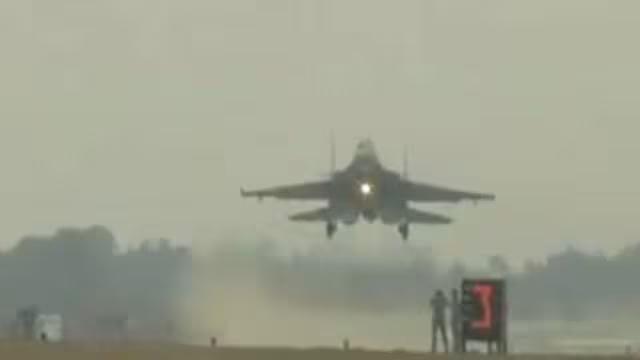
Why is IAF conducting fighter jets’ landing & take-off drill at Ganga Expressway in UP?
In a recent development, the Indian Air Force (IAF) conducted a series of take-off and landing exercises on the Ganga Expressway in Uttar Pradesh, India. The exercise involved fighter jets like the Rafale, and was carried out both during the day and night. This unique exercise was aimed at assessing the expressway’s potential as an alternative runway during times of war or national emergencies.
The Ganga Expressway, which connects the cities of Greater Noida and Ballia, is the first airstrip on any expressway in India equipped to handle both day and night landings of jets. The IAF’s decision to conduct this exercise on the expressway highlights the importance of having alternative runways, which can be used in case of an emergency or during times of conflict.
The exercise was a significant development in the IAF’s efforts to enhance its operational capabilities and prepare for any eventualities. The use of the Ganga Expressway as an airstrip is a testament to the IAF’s ability to adapt and innovate, even in challenging situations.
But why is the IAF conducting such exercises on the Ganga Expressway? To understand this, it is essential to look at the context in which the exercise is being carried out. The IAF has been facing several challenges in recent times, including the need to enhance its operational capabilities and prepare for any potential conflicts.
One of the key challenges facing the IAF is the need to have alternative runways and landing strips. This is because traditional airfields and runways may not be available or may be under attack during times of conflict. In such situations, the IAF needs to have alternative options to ensure the safe and efficient movement of its aircraft.
The Ganga Expressway, with its 594-kilometer length and 10-lane highway, provides an ideal platform for the IAF to conduct such exercises. The expressway is already equipped with advanced technology and infrastructure, including high-speed internet connectivity and advanced surveillance systems.
The IAF’s decision to conduct the exercise on the Ganga Expressway is also a testament to the importance of the expressway as a strategic asset. The expressway is a critical infrastructure project that connects several key cities in Uttar Pradesh and is expected to play a crucial role in the state’s economic development.
The exercise was also significant because it marked the first time that the IAF had conducted such a drill on an expressway. The IAF has been conducting similar exercises on other airfields and runways in the past, but this was the first time that it had used an expressway as an airstrip.
The success of the exercise was evident from the fact that the IAF was able to conduct multiple take-offs and landings on the expressway without any issues. The exercise was carried out in a safe and efficient manner, with the IAF’s pilots and ground crew working together seamlessly to ensure the success of the operation.
The exercise also highlighted the importance of the IAF’s ability to adapt and innovate in the face of challenges. The IAF has a long history of adapting to new technologies and tactics, and the exercise on the Ganga Expressway was a testament to this ability.
In conclusion, the IAF’s decision to conduct fighter jets’ landing and take-off drill on the Ganga Expressway in UP is a significant development that highlights the importance of having alternative runways and landing strips. The exercise was a testament to the IAF’s ability to adapt and innovate, even in challenging situations. The success of the exercise also marked a new chapter in the IAF’s history, as it marked the first time that the IAF had conducted such a drill on an expressway.






